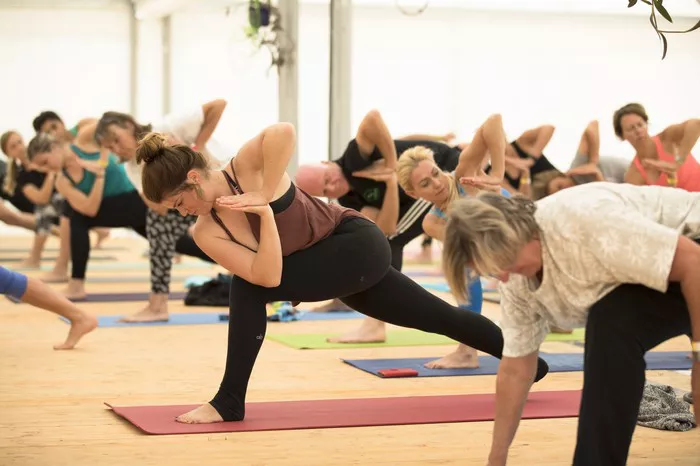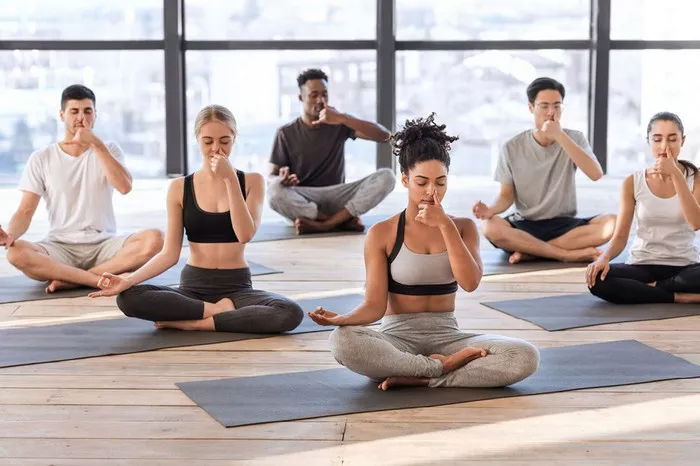Menstruation is a natural, cyclical process that many women experience on a monthly basis. For some, it comes with uncomfortable symptoms such as cramps, bloating, and mood swings. While reaching for painkillers may seem like the most convenient solution, incorporating yoga into your routine can offer holistic relief and support during your period.
Yoga, an ancient practice originating in India, offers a myriad of physical and mental benefits. Among its many advantages, yoga can help alleviate menstrual discomfort by reducing stress, improving circulation, and gently stretching the muscles. Additionally, certain yoga poses specifically target the areas of the body most affected by menstrual symptoms, offering relief and promoting a sense of well-being.
In this article, we’ll explore six yoga poses that are particularly beneficial during menstruation. These poses are gentle, soothing, and designed to support your body as it undergoes this natural process.
1. Child’s Pose (Balasana)
Child’s Pose is a restorative posture that gently stretches the back, hips, and thighs while promoting relaxation. To practice Balasana:
- Start on your hands and knees in a tabletop position.
- Bring your big toes together and separate your knees wide apart.
- Lower your hips back towards your heels and extend your arms forward, lowering your chest towards the mat.
- Rest your forehead on the floor and relax your arms alongside your body or extend them forward.
- Hold the pose for several breaths, focusing on deepening your breath and releasing tension with each exhale.
Child’s Pose provides a gentle stretch to the lower abdomen, which can help alleviate menstrual cramps. It also promotes a sense of grounding and relaxation, making it an ideal posture for easing discomfort during your period.
2. Cat-Cow Pose (Marjaryasana-Bitilasana)
Cat-Cow Pose is a gentle flow between two poses that helps to warm up the spine, increase flexibility, and relieve tension in the back and abdomen. To practice Marjaryasana-Bitilasana:
- Start on your hands and knees in a tabletop position, with your wrists aligned under your shoulders and your knees under your hips.
- Inhale as you arch your back, lifting your tailbone and chest towards the ceiling, and gazing up (Cow Pose).
- Exhale as you round your spine, tucking your chin to your chest, and drawing your navel towards your spine (Cat Pose).
- Continue flowing between Cat and Cow Pose, coordinating your breath with each movement.
- Repeat for several rounds, moving slowly and mindfully.
Cat-Cow Pose gently massages the reproductive organs and stimulates circulation in the pelvic area, which can help alleviate menstrual discomfort. It also promotes spinal flexibility and releases tension in the back, making it an effective pose for managing period-related back pain.
3. Reclining Bound Angle Pose (Supta Baddha Konasana)
Reclining Bound Angle Pose is a deeply relaxing posture that opens the hips and groin while relieving tension in the lower abdomen and pelvic region. To practice Supta Baddha Konasana:
- Begin by lying on your back with your knees bent and feet flat on the floor.
- Bring the soles of your feet together and allow your knees to fall open to the sides, forming a diamond shape with your legs.
- Support your knees with yoga blocks or cushions if needed to prevent strain.
- Rest your arms alongside your body with your palms facing up, or place one hand on your belly and the other on your heart.
- Close your eyes and relax into the pose, allowing gravity to gently open your hips and groin.
Reclining Bound Angle Pose helps to relieve tension in the pelvic floor muscles and increase circulation to the reproductive organs, offering relief from menstrual cramps and discomfort. It also promotes deep relaxation and a sense of inner peace, making it an ideal posture for calming the mind during menstruation.
4. Supine Twist (Supta Matsyendrasana)
Supine Twist is a gentle spinal twist that helps to release tension in the back, hips, and abdomen while improving digestion and detoxification. To practice Supta Matsyendrasana:
- Lie on your back with your arms extended out to the sides in a T position, palms facing down.
- Bend your knees and draw them towards your chest.
- Exhale as you slowly lower your knees to the right side of your body, keeping both shoulders grounded on the mat.
- Gently turn your head to the left and gaze over your left shoulder.
- Hold the pose for several breaths, feeling the gentle twist in your spine and the opening in your chest.
- Inhale to return to the center, then exhale as you lower your knees to the left side and repeat on the opposite side.
Supine Twist helps to massage the abdominal organs, promoting detoxification and relieving bloating and digestive discomfort associated with menstruation. It also releases tension in the back and hips, offering relief from menstrual-related back pain and discomfort.
5. Legs-Up-the-Wall Pose (Viparita Karani)
Legs-Up-the-Wall Pose is a restorative inversion that promotes relaxation, reduces swelling in the legs and feet, and soothes menstrual cramps. To practice Viparita Karani:
- Sit sideways next to a wall with your hip touching the wall.
- Lie on your back and swing your legs up the wall, bringing your buttocks as close to the wall as comfortable.
- Keep your arms relaxed by your sides with your palms facing up.
- Close your eyes and focus on deep, diaphragmatic breathing as you relax into the pose.
Legs-Up-the-Wall Pose encourages blood flow to the pelvic region while alleviating pressure on the lower back and abdomen. It also promotes relaxation and reduces stress, making it an effective pose for managing menstrual discomfort and promoting overall well-being.
6. Corpse Pose (Savasana)
Corpse Pose is a final relaxation posture that allows the body and mind to integrate the benefits of your yoga practice while promoting deep rest and rejuvenation. To practice Savasana:
- Lie on your back with your legs extended and your arms resting comfortably by your sides, palms facing up.
- Close your eyes and allow your body to relax completely, releasing any tension or effort.
- Focus on your breath, allowing it to become slow, smooth, and natural.
- Remain in the pose for several minutes, allowing yourself to rest deeply and fully absorb the benefits of your practice.
Corpse Pose provides an opportunity to rest and restore energy levels, which can be particularly beneficial during menstruation when the body may feel fatigued or depleted. It also promotes a sense of inner peace and relaxation, helping to alleviate stress and tension associated with menstrual symptoms.
Conclusion
Incorporating these six yoga poses into your routine can offer gentle and effective relief from menstrual discomfort while promoting relaxation, stress reduction, and overall well-being. Remember to listen to your body and practice with compassion and awareness, honoring your body’s needs during this sacred time of the month.





















